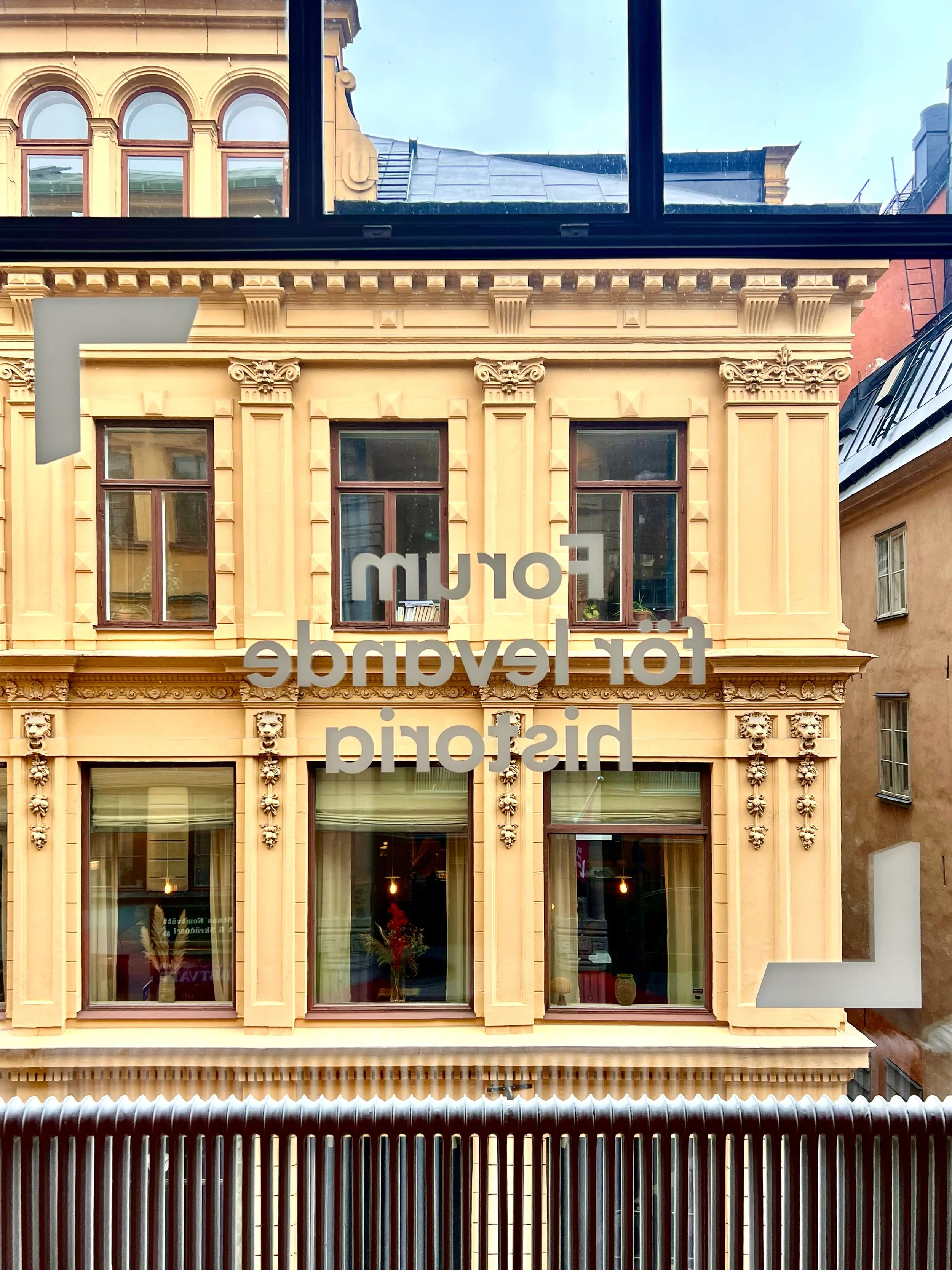The Living History Forum is an authority under the Ministry of Culture with a mandate to work for democracy, tolerance, and human rights. They have a particular responsibility to inform the public about the Holocaust and the crimes against humanity committed by communist regimes. Their overarching purpose is to strengthen the commitment to actively promote the equal value of all individuals. In the fall of 2020, Studio Daniela Juvall, in collaboration with Small World, was commissioned to redesign their visual identity.
Client: Forum för levande historia (The Living History Forum), 2020
Project: Redesign of the visual identity
Creative & strategic team: Studio Daniela Juvall and Karin Rosenberg, Nokoco (Art direction, graphic design & communication strategy), Sofia Sahlén, Small World (project manegement)
From The Living History Forum: Silvia Ernhagen, Cecilia Snell and Johanna Arvidson.
Read more at levandehistoria.se
An older version of the logotype has been in use since the founding in 2003 and was redesigned in 2020 in a more modern style with a focus on readability and accessibility.
Typography
Throughout the identity, the design approach derived from the logo and the Visuelt typeface serves as a consistent thread. It helps give all visual elements character and fosters subtle recognition.
Why is The Living History Forum using Sabon?
In an attempt to erase all visual expressions deemed to contradict German values, the NSDAP imprisoned the typographer and designer Jan Tschichold. His story is part of our shared heritage.
Jan Tschichold is one of our most famous and influential typographers and designers. He worked in Germany during World War II, and his life was deeply shaped by Nazism.
In 1925, Tschichold taught design and typography in Munich. Influenced by Russian Constructivism and the Bauhaus movement, he advocated for design free from the "decorative excess" that came from the Art Nouveau aesthetic. This was the complete opposite of the NSDAP's vision, which sought to erase "foreign" influences in favor of restoring Germanic traditions. As a result, Tschichold was seen as a threat to the German heritage.
In 1933, ten days after the NSDAP took power, Tschichold and his wife, Edith, were arrested. During the arrest, Soviet posters were found in their apartment, and he was suspected of collaborating with communists. To ”protect the German people,” the Gestapo confiscated all copies of his books. Years later, the letter that led to his arrest was discovered. It stated that his use of exclusively lowercase letters and his illustration techniques were ”a subversive tendency incompatible with the nationalist state's effort [to maintain the German typographic and cultural heritage].” Thanks to Tschichold's acquaintance with one of the officers who had arrested him, he managed to obtain a passport and flee to Switzerland, where he spent most of his life.
Jan Tschichold’s most famous typeface is the classic Sabon, designed in 1967 as a modernized version of the Garamond typeface. It is a soft, well-crafted typeface with high readability, and it was well digitized by the type foundry Linotype in 2012 as Sabon Next.
In all aspects of life, we are influenced by our shared history, both in large and small ways. The story of Jan Tschichold is an integral part of the narrative of the Living History Forum, highlighting the ways in which our shared history shapes both our identities and our design choices. By incorporating elements of this history into the visual expression, we reinforce the commitment to preserving and communicating the values of democracy, tolerance, and human rights.
Exterior & signage
Love bombing after an antisemitic attack on The Living History Forum, 2020.
The Living History Forum works to convey a positive sense and a desire for change, but also communicates difficult issues and dark parts of our history. The visual communication is clear, warm, positive, professional and reliable. Credibility and accessibility are key elements of the identity.
Climate activist Anabela Lemos was awarded the 2022 Per Anger Prize, established by the Living History Forum.




















